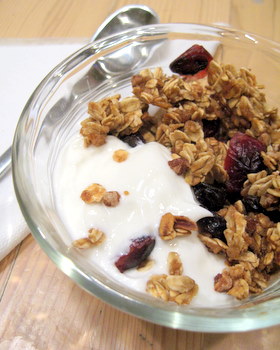You cannot control some things that put you at risk for breast cancer, such as your age and being female. But you can make personal choices that lower your risk of breast cancer. If you are at high risk for getting breast cancer, your doctor may also offer you certain medical treatments that can help prevent breast cancer.
Female hormones
Hormones change the way cells within the breast grow and divide. The years when you have a menstrual cycle are your high-estrogen years. Experts think that the longer you have higher estrogen, the more risk you have for breast cancer.4 This includes taking hormones after menopause.1, 26
* Avoid long-term, high-dose hormones after menopause. If you use hormone therapy for menopause symptoms, use a low dose for as short a time as possible. This includes estrogen-progestin and estrogen-testosterone.1, 3 Using estrogen by itself may slightly raise breast cancer risk.1
* Breast-feed. Breast-feeding may lower your breast cancer risk. The benefit appears to be greatest in women who breast-fed for longer than 12 months or who breast-fed several children.27
* Strive for a healthy weight. Extra fat cells make extra estrogen, which raises your breast cancer risk.4 Getting regular exercise and watching what you eat can help.
Having a full-term pregnancy before age 30 also lowers your breast cancer risk.10
Healthy food and exercise
* Eat a healthy diet with plenty of fruits, vegetables, and whole grains. A low-fat diet with limited red meat may lower your breast cancer risk.28, 29, 30
* Be active. Try to do at least 2½ hours a week of moderate exercise. One way to do this is to be active 30 minutes a day, at least 5 days a week.5, 31 Staying active may lower your breast cancer risk.32
* Drink no more than one alcoholic drink a day.4 Using alcohol leads to extra estrogen in the body, which raises your breast cancer risk.10
"Anti-estrogen" medicine
If you are at high risk for breast cancer, talk to your doctor about taking medicine that helps prevent it. This is sometimes called hormone therapy for breast cancer. It blocks the effects of hormones on breast cancer cells.
* Tamoxifen is a medicine that blocks the effect of estrogen on breast cancer cells and normal breast cells. Among high-risk women, tamoxifen lowers their risk of breast cancer about the same as raloxifene does.33 But this medicine may also increase other risks, such as for endometrial cancer, stroke, and blood clots in veins and in the lungs.
* Raloxifene is widely used to prevent and treat osteoporosis. It works like estrogen on bone, but it works like an "anti-estrogen" on breast tissue.34 Among high-risk women, raloxifene lowers their breast cancer risk about the same as tamoxifen does. Compared to tamoxifen, raloxifene's endometrial cancer risk is lower.33
The U.S. Food and Drug Administration (FDA) has approved raloxifene for use in reducing the risk of breast cancer in postmenopausal women who have osteoporosis. The FDA has also approved raloxifene for use in postmenopausal women at high risk for breast cancer.
If you are at high risk for breast cancer
If you are concerned that you may have an increased risk of developing breast cancer, talk with your doctor about whether you should take tamoxifen or raloxifene to prevent breast cancer. It is important to consider both their benefits and risks.
If you have a strong family history of early breast cancer or breast and ovarian cancer, talk to your doctor about BRCA testing. For more information, see:
Click here to view a Decision Point. Should I have a gene test for breast cancer?
Click here to view a Decision Point. What should I do if I'm at high risk for breast cancer?
Surgery to remove the breasts. Some women with a strong family history of breast cancer decide to have surgery to remove their breasts. This called a preventive or prophylactic mastectomy. It reduces the risk of developing breast cancer by approximately 90% in women who have a strong family history of breast cancer. A cancer risk assessment, genetic test, and psychological counseling are recommended for women who may be considering this treatment option.35
Surgery to remove the ovaries. Genetic mutations (called BRCA1 or BRCA2 gene changes) raise the risk of both breast cancer and ovarian cancer. Hormones made by the ovaries increase the risk of breast cancer. Removal of the ovaries (prophylactic oophorectomy) reduces the risk of breast or ovarian cancer in women with a genetic mutation. Such a decision is best made after a cancer risk assessment, genetic test, and counseling.36
Do some yoga exercises to help balance the hormones too. It's a great feeling way to prevent cancer or make you feel better if you already have cancer









